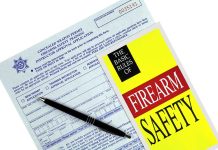
(TacticalNews.com) – When it comes to developing a survival mindset, one of the most critical components is situational awareness: knowing what is going on around you at all times. Practicing situational awareness can involve anything from noticing a car before you step onto the road to recognizing someone acting strangely before they open fire on a crowd. Being able to spot trouble before it gets to you is a surefire way to stay one step ahead of danger.
In the following video, City Prepping outlines a few ways to develop situational awareness:
The first step in developing situational awareness is to observe. Unfortunately, in modern society, there are thousands of ways to become distracted. The biggest culprit, however, is the cell phone. It is hard to be alert with one’s nose pressed against a touchscreen (figuratively speaking). In order to observe what is happening in the environment, one must be in the moment, not distracted by their phone.
One important skill to train on is memorizing new environments. This can be practiced by taking note of the items around you, then seeing what you can remember after you look away. With practice, this skill will improve and you’ll be able to remember more. Additionally, this puts the brain into an active mental state rather than passively accepting, and ignoring, the things around you.
When entering any area, find a position that allows a full view of the surroundings. For example, in a restaurant, find a seat facing the entrance—near an exit, if possible. Should an emergency arise, such as an active shooter or robbery, you have a better chance of getting yourself out of the situation..
To learn how to identify odd behavior, do some people watching. Simply observe others as they go about their daily lives. Once you have established a baseline for basic human activity, spotting strange or threatening behaviors will become easier.
The second step in developing situational awareness is to orient. This involves taking your observations and giving them context. Once something out of the ordinary is spotted, orient towards it for further observation, and if necessary, to take action.
Next, you must make a decision. Is the unusual behavior a threat, or just some weirdo acting out? Does this require a quick escape? Do you need to prepare to defend yourself?
Once a decision is made, it’s time to act. Dart toward an exit, engage an attacker or take cover—whatever action is appropriate for the situation at hand.
The difference between life and death can come down to a matter of seconds. This is why training the mind to observe the environment at all times and identify threats can save your life.
For more information on how to train to act quickly when it counts, check out our article here.
Has your personal situational awareness ever saved you from danger? Reply to your email and share your story, we would love to hear from you.
Copyright 2021, TacticalNews.com



















